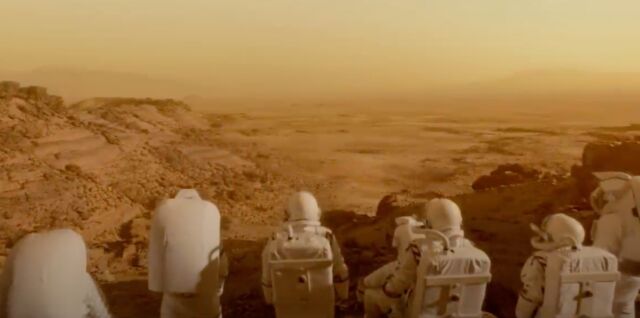The fictional battle for the domination of space between the US and Russia shifts its focus from the Moon to Mars for the third season of For All Mankind. Ars staffers have dubbed this relatively underappreciated gem "Moon Show," and Apple TV+ has now released the official trailer for the show's third outing on the streaming platform.
(Some spoilers for the prior two seasons.)
Ars Senior Technology Reporter Andrew Cunningham picked the series for our 2021 TV Technica list, praising its "complex, likable, memorable characters." Series creator Ronald D. Moore (Battlestar Galactica) has made a point of trying to keep the show reasonably close to reality, despite the science-fiction concept, often consulting the original NASA plans for guidance and incorporating archival footage throughout the season. And as Cunningham wrote last year, "its repurposing and deepfaking of historical footage is fascinating both as a storytelling device and as a technical achievement."
In S1, an astronaut named Ed Baldwin (Joel Kinnaman) became the Apollo 10 commander. His foil was fellow astronaut Gordo Stevens (Michael Dorman), a stereotypical hard-drinking, womanizing fighter pilot. Apollo 10 was the "dress rehearsal" for the historic Apollo 11 Moon landing when American astronaut Neil Armstrong became the first man to walk on the Moon. But in this alternate timeline, the decision not to land on the Moon with Apollo 10 meant the USSR beat America to the punch. Soviet cosmonaut Alexei Leonov made history instead.

Throughout the first season, both countries found water on the Moon, and America set up the first Moon base in 1974, followed shortly thereafter by a Soviet lunar base eight miles away. The first season ended with a complicated two-part episode involving a desperate launch of Apollo 25 to conduct an Apollo 24 relief and rescue mission. A post-credits scene set in 1983 featured a sea launch of a Sea Dragon rocket with a plutonium payload, bound for the US Jamestown colony on the Moon.
The second season was set during the same 1980s time period during the presidency of Ronald Reagan. In the show's alternate timeline, the US and the Soviet Union were now fighting over which country would control the rich resources on the Moon. NASA was becoming more militarized as a result, and Baldwin became commander of a new nuclear-powered space shuttle called Pathfinder.
During the season, the lunar Jonestown colony grappled with massive solar flares, sabotage by Russian cosmonauts, and a damaged nuclear reactor, requiring a daring repair mission in duct-taped space suits. (RIP the two astronauts who performed the repairs and kept the reactor from melting down but perished from vacuum exposure.) Ultimately, the threat of all-out nuclear war was neutralized, and the final scene showed a human in a spacesuit walking on the surface of Mars.

And that's where the third season picks up. In the 1990s, the battle for space turned to Mars, and it's not just a race between the US and Russia. Private industry has entered the fray in the form of a company called Helios. "Some say private citizens have no business in space exploration," we hear Dev Ayesa (Edi Gathegi) declare. "I emphatically disagree." (He appears to be Helios' CEO.) But NASA is determined not to come in second place again—"to anyone."
Scientists hope to find possible signs of life and sufficient resources (like water) to support large-scale human colonization. But such an ambitious mission rarely runs smoothly. Most notably, a massive dust storm on Mars obscures both landing sites, forcing the astronauts to make a blind landing. Judging by the wild cheers of mission control in the trailer, NASA succeeds. But if past seasons are any indication, that successful landing is just the beginning.
The third season of For All Mankind premieres on Apple TV+ on June 10, 2022.
Listing image by YouTube/Apple TV+
reader comments
64